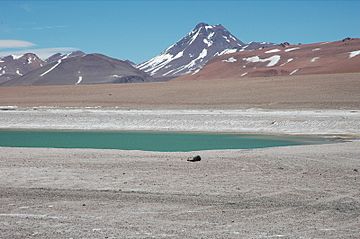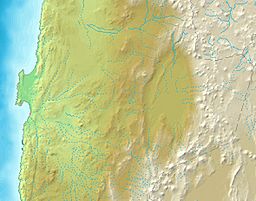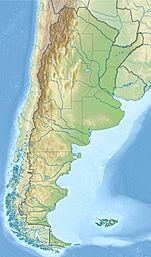Acamarachi facts for kids
Quick facts for kids Acamarachi |
|
|---|---|
| Pili | |

Acamarachi viewed from the north
|
|
| Highest point | |
| Elevation | 6,046 m (19,836 ft) |
| Prominence | 1,608 m (5,276 ft) |
| Parent peak | San Pedro (Chile volcano) |
| Listing | Ultra |
| Geography | |
| Parent range | Andes |
| Geology | |
| Mountain type | Stratovolcano |
| Last eruption | Unknown |
| Climbing | |
| First ascent | 14 March 1939 - Aldo Bonacossa and Remigio Gerard (Italy) |
Acamarachi (also called Pili) is a tall volcano in northern Chile. It stands at 6,046 metres (19,836 ft) high, making it the tallest volcano in this part of Chile. Its name means "black moon." Acamarachi is part of the Andes mountain range, an area with a lot of volcanic activity. The very dry weather here helps old volcanoes keep their original shape.
Acamarachi looks like a cone with steep sides. It has a lava dome on its northern side. Even though it hasn't erupted in modern times, some lava flows near the top might be from after the last ice age. Acamarachi is made of volcanic rocks called andesite and dacite.
On top of Acamarachi, there is an ancient Inca mountain sanctuary. People have found several small figurines there. One female figurine is made of silver, and a male one is made of a special shell called thorny oyster. Both figurines were found wearing tiny clothes.
About Acamarachi Volcano
Acamarachi is a tall, cone-shaped volcano. Its upper sides are very steep, reaching an angle of 45 degrees. On the northern side, there is a large lava dome. The rest of the volcano looks very even.
Inside the summit crater (the opening at the top), there is a crater lake that is about 10–15 metres (33–49 ft) deep. This lake might stay unfrozen because of heat from inside the volcano. As of 2021, this lake is known as the highest place in the world where someone has done an underwater dive.
The volcano is made of volcanic rocks like andesite and dacite. These rocks are strong and help give Acamarachi its steep shape. Scientists believe Acamarachi's last eruption might have happened a very long time ago, possibly after the last ice age. There are no signs of recent lava flows on its sides. Also, the top crater looks worn down.
Acamarachi does not have any glaciers or ice that stays all year. This is because the climate in the area is very dry. However, in the past, the mountain likely had many glaciers. You can still see signs of these old glaciers at the base of the mountain.
Inca Mountain Sanctuary
Acamarachi is famous for being an Inca mountain sanctuary. The Inca people used at least 15 other mountains in the Andes as sacred places. These include mountains like Licancabur and Sairecabur. On Acamarachi's summit, there are four special platforms arranged in a cloverleaf shape. These were likely used for ceremonies.
The Inca found small figurines on Acamarachi. These figurines might represent important people from the Inca Empire. One figurine, made from a Spondylus shell, wore tiny clothes made of camelid wool. These clothes had special imperial designs and many colors. The shirt was yellow. The fabrics found on Acamarachi are similar to a style called "Catarpe," which is linked to the Inca. These tiny clothes seem to be smaller versions of what the Inca wore. This figurine did not have a special plaque, unlike some other Inca figurines. A feather and a shawl were also found with it.
Another figurine, found in 1971, was a woman made of silver. She wore tiny red clothes with decorations and a red feather. Similar dressed figurines have been found on other high mountains in the Andes, such as Aconcagua. Today, the figurines from Acamarachi are on display at the R. P. Gustavo Le Paige Archaeological Museum in San Pedro de Atacama.
The area where Acamarachi is located was once the southern part of the Inca Empire. A major Inca road passed near the town of Toconao, which is not far from Acamarachi.
See Also
 In Spanish: Volcán Acamarachi para niños
In Spanish: Volcán Acamarachi para niños
- List of volcanoes in Chile
- List of stratovolcanoes
- List of Ultras of South America
- List of Andean peaks with known pre-Columbian ascents




